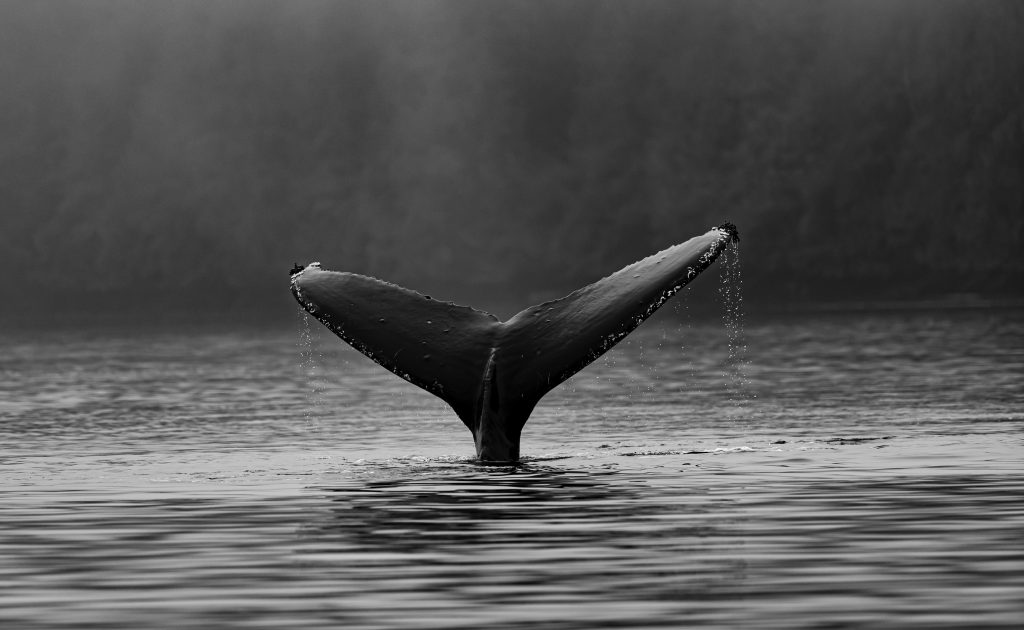Why Dead Whales Continue To Wash Up On Northeastern Shores
At least nine dead whales have washed up on the northeastern coast in the last two months, and while there is still no clear consensus why, some are attributing the deaths to the recently erected offshore wind farms located off the coasts of New York and New Jersey.
This article is more than 2 years old

Dead whales are washing up on northeastern United States shores and authorities are scrambling to find an explanation for the sudden surge in deaths. An investigation into the “unusual mortality events” (UMEs) has been launched to figure out why nine whales have washed up in 2023. These massive carcasses add to the count of nearly two dozen dead whales that have appeared on the U.S. Atlantic coast since early December.
Local authorities have been working with the National Oceanic and Atmospheric Administration (NOAA) and the Atlantic Marine Conservation Society to find out what’s behind the increased appearance of dead whales in the Northeast. Conservationist activists and some conservative pundits have formed an unusual alliance in pointing the finger of blame. Both say the rise in deaths is due to increasing offshore wind projects.
In March 2021, the Biden administration began pushing for a surge of new offshore wind projects off the New Jersey and New York coasts. The wind projects are some of the steps the administration is taking to push the country away from fossil fuels to renewable clean energy. Their goal is to create 30 gigawatts of wind-generated energy by 2030.
Now, Tucker Carlson and other conservative voices are saying the noisy wind turbines (and the sonar equipment involved in setting them up) are killing the whales. Local animal welfare organizations and whale recovery groups say the government is covering up the fact that their clean energy efforts are resulting in dead whales. They are calling on federal authorities to do more to protect the coastline and its marine inhabitants.
However, federal officials are pushing back, saying there’s no evidence they’re to blame for the dead whales. NOAA Fisheries released a statement siding with the government’s perspective. “[T]here is no evidence to support speculation that noise resulting from wind development-related site characterization surveys could potentially cause mortality of whales, and no specific links between recent large whale mortalities and currently ongoing surveys.”
According to The Guardian, humpback whale strandings have increased over the past seven years. Scientists examined 178 dead whales found along the east coast, performing full or partial necropsies on the mammals. They determined that 40% had evidence of interaction with humans, killed either by ships or becoming entangled in fishing gear.
On its FAQ webpage dedicated to answering questions about the surge in dead whales, NOAA says the mid-Atlantic humpback whale population has grown. “Along the New Jersey shore, these whales may be following their prey (small fish) which are reportedly close to shore this winter.” They also said that the presence of smaller fish increases fishing boat traffic, resulting in more whales being struck by vessels.
The NOAA also directly addresses the acoustic trauma posed by wind turbines and their installation, saying that it’s challenging to assess in stranded dead whales. “Scientists look for bruising or trauma to the ear and other organs, but linking it to a particular sound source is difficult, as certain parts of the ear decompose very quickly (within hours), even more so than some of the other parts of the animal. If the whale is already in moderate to advanced decomposition, then generally microscopic changes in the ears are no longer detectable.”
Some marine biologists aren’t as convinced that wind projects are harmless to whales and other sensitive marine creatures. A 2019 NPR article explained some of the threats the skyscraper-sized wind turbines pose to extraordinarily sound-sensitive whales and how they may be mitigated. For example, the construction companies have promised to lower prefabricated concrete foundations instead of using noisy pile drivers to secure the huge steel towers to the bedrock below the ocean floor.
Scientists have used buoys with acoustic monitors to record whale calls and measure migratory patterns in the areas off New York and New Jersey shores. In addition to ship strikes during construction, another threat is “…the long-term danger the massive underwater structures and the transmission cables might pose to the whales. That is largely unknown, as whales do not migrate through the massive offshore wind farms in Europe.”



